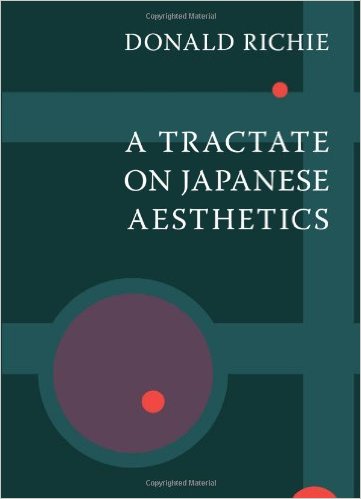 Many Japanese writers prize a quality of indecision in the structure of their work. And something too logical, too symmetrical is successfully avoided when writers ignore the suppositions of the questions asked of them. It is then not the assumptions of the writer’s controlling mind that are followed but, as the Japanese phrase it, the brush itself.
Many Japanese writers prize a quality of indecision in the structure of their work. And something too logical, too symmetrical is successfully avoided when writers ignore the suppositions of the questions asked of them. It is then not the assumptions of the writer’s controlling mind that are followed but, as the Japanese phrase it, the brush itself.
Zuihitsu, the Japanese word we might translate as “essay,” implies just that—following the brush, allowing it to lead. The structure is the multiplicity of strokes that make up the aesthetic quality, one which they imply and which we infer.
A Tractate on Japanese Aesthetics
by Donald Richie
**
Preface
In writing about traditional Asian aesthetics, the conventions of a Western discourse—order, logical progression, symmetry—impose upon the subject an aspect that does not belong to it. Among other ideas, Eastern aesthetics suggests that ordered structure contrives, that logical exposition falsifies, and that linear, consecutive argument eventually limits.
As the aesthetician Itoh Teiji has stated regarding the difficulties that Japanese experience in defining aesthetics: “The dilemma we face is that our grasp is intuitive and perceptual rather than rational and logical.” Aesthetic enjoyment recognizes artistic patterns, but such patterns cannot be too rigid or too circumscribed.
Most likely to succeed in defining Japanese aesthetics is a net of associations composed of listings or jottings, connected intuitively, that fills in a background and renders the subject visible. Hence the Japanese uses for juxtaposition, for assembling, for bricolage.
In any event, for any consideration of aesthetics, East or West, the quality of apprehension is sensibility—an awareness, a consciousness, a sensitivity. It is alive and often unfriendly to interpretation, and if it is to be pinned to the page, then feints and indirections are some of the means.
We thus should not strive for logical conclusions. Rather, we ought to define those perceptions and variances of aesthetic appreciation through a style that conveys something of the very uncertainty of their description.
Many Japanese writers prize a quality of indecision in the structure of their work. And something too logical, too symmetrical is successfully avoided when writers ignore the suppositions of the questions asked of them. It is then not the assumptions of the writer’s controlling mind that are followed but, as the Japanese phrase it, the brush itself.
Zuihitsu, the Japanese word we might translate as “essay,” implies just that—following the brush, allowing it to lead. The structure is the multiplicity of strokes that make up the aesthetic quality, one which they imply and which we infer.
In this book I have sought to approximate this neglect of logical method, this dismissal of linear structure, and both in the text and in its placement on the page I have attempted to give some idea of the progression of a zuihitsu.
DONALD RICHIE
Tokyo, 2007
ドナルド・リチー
ウィキペディア
https://ja.wikipedia.org/wiki/ドナルド・リチー
ドナルド・リチー(Donald Richie、1924 – 2013)
(sk)
ドナルド・リチーの
というところで、あれっと思った。
随筆とは、筆に随う(したがう)こと。筆のおもむくままに書いてゆくこと。
感じるままに、そして思うままに書く。それが随筆。
だとすれば、吉田兼好の
こそが、随筆ではないか。
心にうつりゆくよしなしごとをそこはかとなく書き付くる。随筆とは、そういうものなのだろう。